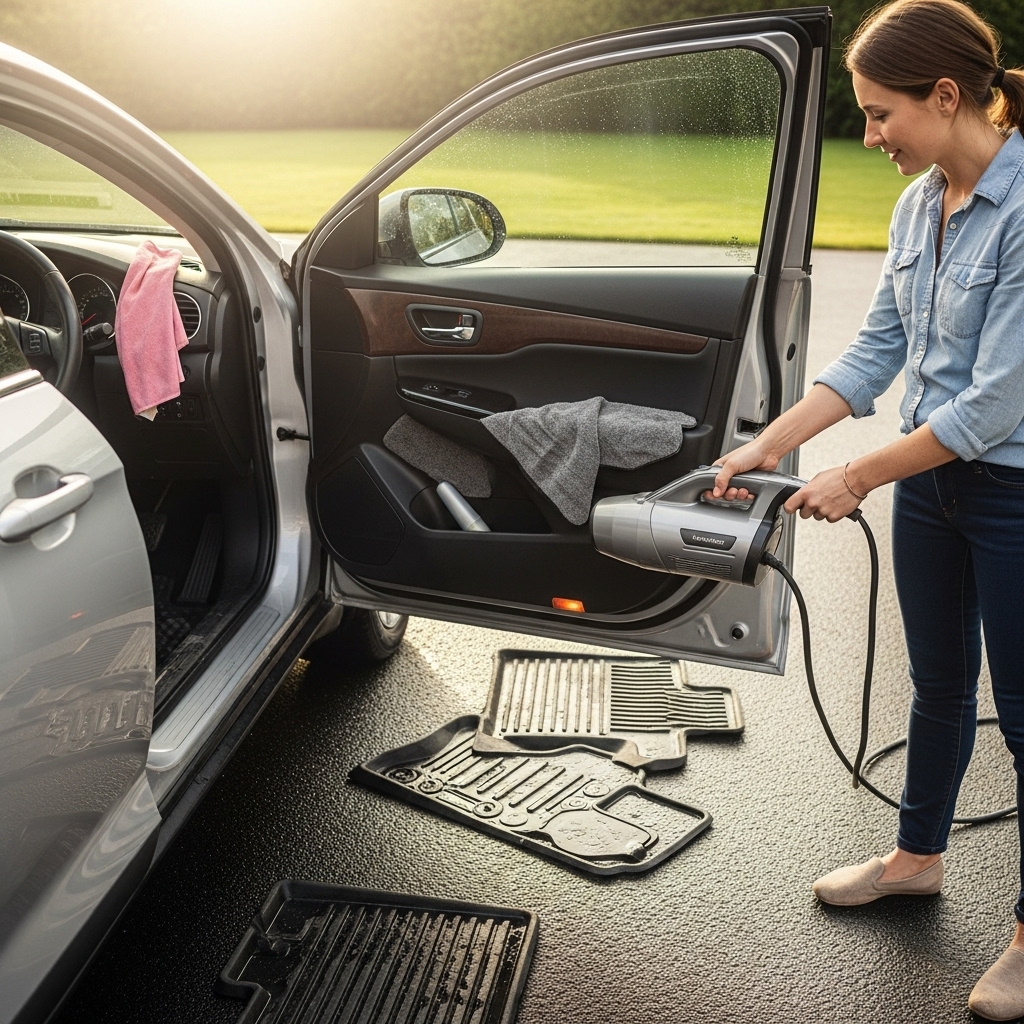Few things ruin a commute like a stubborn musty smell in your car. In Bloomfield, New Jersey, rainy spells, snow, and humid summers can leave vehicles damp inside—especially if windows were left cracked, weatherstripping is worn, or a spill soaked the carpet. The key to eliminating mold odor is the same as in a house: find moisture, dry thoroughly, clean, and only then neutralize the lingering smell. If you’d rather skip guesswork and get a proven plan, a professional approach to mold odor removal can help you restore a fresh interior quickly and safely.
This step-by-step guide shows you how to track the source, dry the vehicle fully, clean interior surfaces and textiles, and keep odor from returning. You’ll learn what to do, what to avoid, and how to maintain a clean cabin through every season.
Find the Source of Moisture
Start by identifying where water entered or stayed trapped. Cars have many hidden pockets where moisture can linger.
- Floor pans and under mats: Lift mats and feel the carpet and padding for dampness.
- Seats: Check seams and under-seat areas for moisture and odors.
- Trunk: Look around the spare tire well and side panels for water trails.
- Door and window seals: Inspect weatherstripping for gaps or tears.
- HVAC: If the smell worsens with the fan on, the system may be involved.
Dry the Interior Completely
Drying is non-negotiable. Without it, odors will return quickly.
- Vent and sun: Park in a secure, sunny spot with doors or windows open when weather allows.
- Air movement: Use fans to move air across damp surfaces; avoid blasting directly at visible growth.
- Absorb moisture: Place desiccant packs or moisture absorbers inside the cabin.
- Remove soaked items: Take out floor mats, seat covers, and removable liners to dry separately.
Clean Methodically
Once dry to the touch, tackle the dust and residues that harbor odor molecules.
- HEPA vacuum: Thoroughly vacuum seats, carpets, and crevices.
- Wipe hard surfaces: Clean dashboards, consoles, door panels, and trim with appropriate cleaners; rinse or wipe with water as needed.
- Launder textiles: Wash removable fabric covers or mats per manufacturer guidance; dry completely.
- Spot treat: Address stains and spills on seats and carpets, being careful not to over-wet.
Neutralize Odor Safely
Apply neutralizers designed for musty odors according to label directions. Focus on carpets, under-seat areas, and the trunk. Use light applications and adequate ventilation, allowing the product to dwell and then air out. Avoid heavy perfumes that simply mask the smell.
Address the HVAC System
If odor intensifies when the fan runs, the HVAC may harbor moisture or organic debris.
- Replace the cabin air filter.
- Confirm the A/C condensate drain is not blocked.
- Run the system on fresh air (not recirculate) during drying to exchange cabin air.
Common Entry Points for Water
Cars collect water through a variety of small faults. Watch for:
- Clogged sunroof drains leading to damp headliners.
- Door seal leaks after car washes or storms.
- Poorly sealed rear lights causing trunk moisture.
- Spills that soaked the carpet pad, not just the surface.
Ongoing Prevention
- Keep rubber mats clean and dry; shake out moisture after storms.
- Avoid storing damp gym clothes or gear in the cabin or trunk.
- Crack windows only when weather is dry and the car is secure.
- Vacuum regularly to reduce dust that holds odor.
What to Avoid
- Over-wetting carpets during cleaning, which drives moisture into the pad.
- Using overpowering fragrances to hide smells instead of solving moisture.
- Ignoring small leaks from sunroof or door seals until they become major.
Frequently Asked Questions
Q: How fast can I remove a musty smell from my car? A: Many drivers notice improvement after thorough drying and cleaning; persistent odor suggests hidden moisture or saturated padding.
Q: Do I need to remove seats or carpet? A: Only if moisture penetrated deeply. You can often resolve odor with surface drying and cleaning if you act quickly.
Q: Are ozone treatments necessary? A: Ozone requires strict safety protocols and isn’t suitable for every situation. Try drying, cleaning, and safe neutralization first.
Q: Why does the smell come back after rain? A: You likely have an unresolved leak or blocked drain. Track water pathways and correct the entry point.
Q: Will running the heater help? A: Heat can speed drying, but pair it with ventilation and moisture absorption for best results.
Drive Without the Musty Smell
With careful drying, methodical cleaning, and safe neutralization, you can restore a fresh cabin and keep it that way. For a streamlined plan that matches your vehicle and climate, consider expert help with mold odor removal. A precise assessment and targeted steps will get you back on the road breathing easy.

